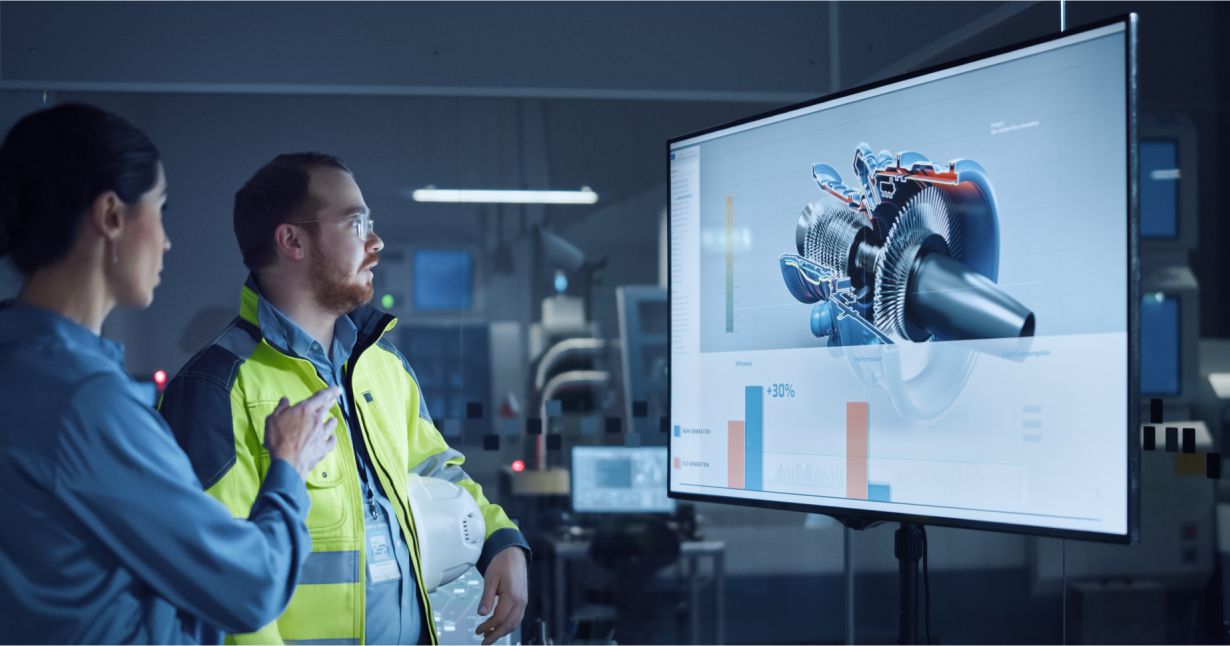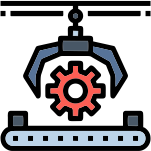One of the most consistent and important industries in the world is manufacturing. However, technology has changed the industry completely. It has introduced many great innovations that can help them scale and improve production quality.
Traditional methods of product design and development are giving way to advanced digital technologies like 3D modeling, which can improve the efficiency of employees and the company’s production.
3D models have become an indispensable tool for the manufacturing industry as they help reduce production time and eliminate wastage to elevate product quality.
Therefore, this blog will help you learn how 3D models can streamline operations, optimize resource use, and improve team efficiency to boost production in the manufacturing sector, while also meeting sustainability and precision goals.

What is a 3D Model?
A 3D model is a digitally created three-dimensional representation of a physical object. Built using 3D development software, these models allow engineers, designers, and manufacturers to visualize a product from every angle, test its functionality, simulate performance, and modify components before actual production.
More than just a visual asset, a 3D model for manufacturing acts as a dynamic blueprint that supports the full product lifecycle, from ideation to execution. It integrates data, design logic, and simulation in a single digital thread that guides every stage of manufacturing with precision.
How 3D Models Help in the Manufacturing Sector

Makes Employees Efficient
A 3D model simplifies communication, whether you are training new workers or coordinating across departments. Employees can clearly understand how a part fits within an assembly or how a machine operates without needing to decipher complex 2D diagrams.
The visual clarity accelerates comprehension, reduces the learning curve, and fosters better cross-functional collaboration, leading to improved workplace productivity across the manufacturing sector.
Reduce Wastage
In traditional workflows, misinterpretation of design or production flaws often results in discarded materials. With 3D development, products are prototyped digitally first. Engineers can run stress tests, identify defects, and rework designs virtually before touching any raw material.
This significantly reduces trial-and-error cycles and helps the manufacturing industry minimize material loss, conserve energy, and streamline budget spending.


Better Quality Products
The integration of simulations, stress analysis, and tolerance checks in a 3D model allows manufacturers to improve product reliability. Whether it’s ensuring an automotive parts fit perfectly or a medical device functions safely, quality control begins at the modeling stage.
Using real-time feedback and digital iteration, teams can make performance-driven improvements, ensuring the end product not only meets industry standards but also customer expectations.
Supplements Instructions
Instead of relying on paper-based manuals or PDFs, many manufacturers now provide technicians with interactive 3D models. These models can be rotated, zoomed in, and exploded into individual parts, making assembly and servicing intuitive and error-free.
Augmented reality (AR) integrations with 3D development tools also allow real-time overlay of instructions on physical objects, creating a smarter, faster, and safer work environment.


Enables Remote Collaboration
With global supply chains and distributed teams, remote collaboration is critical. Cloud-based 3D development platforms allow engineers and designers across the globe to access, annotate, and review the same model simultaneously.
Know the application and benefits of virtual shoe try on for footwear.
This reduces dependency on in-person meetings, eliminates version confusion, and supports faster approvals to accelerate overall time-to-market for products.
Benefits of Using 3D Models in the Manufacturing Industry

Sustainability
3D modeling contributes to a greener production pipeline. By eliminating unnecessary prototyping, optimizing material use, and identifying flaws early, manufacturers significantly lower their environmental footprint.
Moreover, lightweighting products through virtual simulation, a common feature in 3D development, can reduce fuel consumption in logistics and end-use, reinforcing long-term sustainability goals.
Optimal Utilization of Resources
When working with a 3D model for manufacturing, companies can simulate factory layouts, assembly processes, and even machine workloads. This allows operations managers to allocate labor, machines, and materials more efficiently.
From lean inventory management to predictive maintenance planning, 3D modeling ensures the most effective use of every asset on the factory floor.
Understand how virtual try on is a website traffic booster for your website.


Quality and Precision
Tolerances, material behaviors, and assembly clearances can be measured and optimized directly within the 3D model. The result is precision engineering that eliminates misalignments, improves interoperability between parts, and reduces dependency on post-production corrections.
For sectors like aerospace, defense, and electronics, where precision is non-negotiable, 3D development ensures consistent accuracy.
Increase Production
By allowing fast prototyping, instant design feedback, and data-driven optimization, 3D models reduce lead times and increase production output. Engineers spend less time going back and forth between design and manufacturing, and more time innovating.
Moreover, AI-based generative design (a subfield of 3D development) can create hundreds of design iterations in minutes, empowering teams to select the best-performing model without wasting weeks of manual drafting.


Faster Time-to-Market
Speed is a competitive advantage in manufacturing. 3D models for manufacturing shorten the product development lifecycle by allowing teams to test, validate, and finalize designs quickly. Changes are implemented digitally, eliminating delays in tooling or fabrication.
Companies can bring products to market faster, respond to customer feedback sooner, and capitalize on trends while they are hot.
Know how brands are using visual commerce to dominate the market.
Real-World Application of 3D Modeling in Manufacturing

Automotive Industry
Car manufacturers use 3D models for everything, from engine components to entire chassis design. This helps improve aerodynamics, reduce part count, and accelerate prototyping.
Aerospace and Defense
High-precision simulations through 3D development tools allow manufacturing to design parts that meet stringent quality and safety standards, reducing risk in mission-critical applications.


Consumer Electronics
In electronics, space and component layout are vital. 3D modeling ensures parts like batteries, chips, and connectors fit perfectly within compact casings while maintaining heat dissipation and structural integrity.
Industrial Machinery
Complex machine tools are modeled in 3D to verify moving parts, identify points of stress, and predict wear-and-tear, leading to better reliability and lifecycle management.
Study why virtual showrooms are essential for retail brands.

Conclusion
The use of 3D models for manufacturing is not just a technological upgrade; it’s a strategic move toward a more productive, sustainable, and innovative future. By embracing 3D development, the manufacturing industry is unlocking new levels of efficiency, minimizing waste, maximizing precision, and accelerating production timelines.
As the competition tightens and customer demands evolve, the manufacturers who invest in 3D modeling technologies today will be the ones leading the industry tomorrow.
